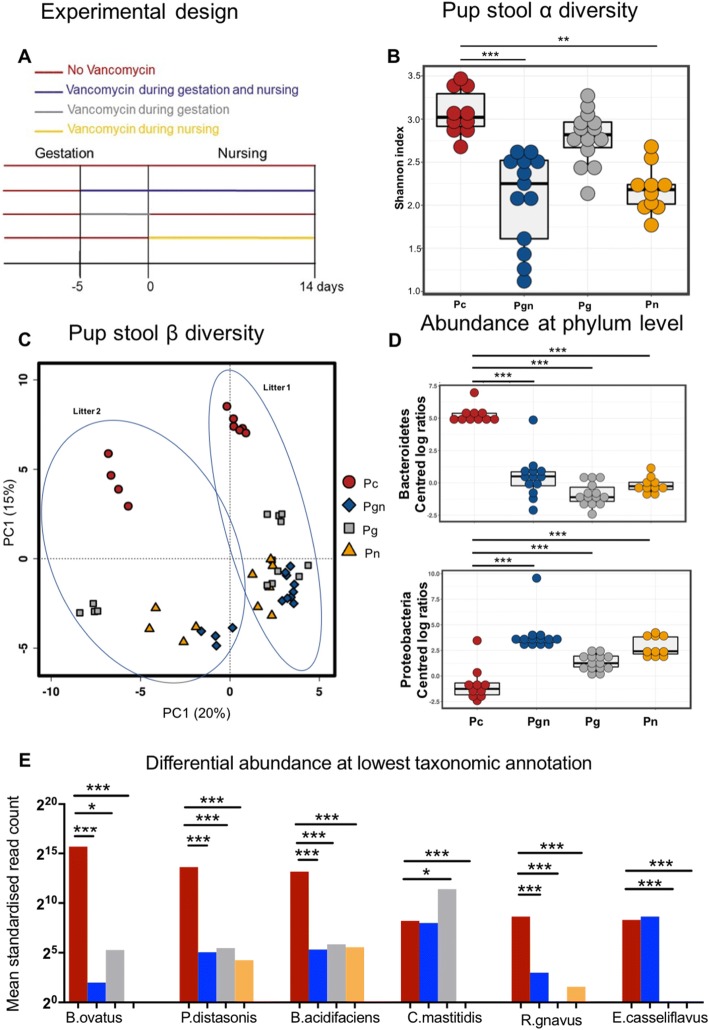Fig. 1.
Maternal oral vancomycin profoundly alters pup intestinal microbiota composition. a Experimental setup: BALB/C mice received oral vancomycin (1 mg/mL) for 5 days prior to delivery (gestation: Mg), 14 days after delivery (nursing: Mn), or 5 days prior to delivery through 14 days of nursing (gestation plus nursing: Mgn). Control mice (Mc) were not exposed to vancomycin. Fecal samples were collected from both mothers and their offspring 14 days postpartum. b Shannon index of pup fecal microbiotas of pups born to control (Pc: brown), Mgn (Pgn: blue), Mg (Pg: gray), or Mn (Pn: yellow) dams. Boxplot shows 25th and 75th percentiles with a line at the median. c Principal coordinate analysis of pups’ fecal microbial β-diversity based on Bray-Curtis dissimilarity. d Significantly different taxa abundances at phylum level in pup fecal microbiota communities after centered log ratio data transformation (Kruskal-Wallis and Mann Whitney U test). e Significantly differentially abundant OTUs in pup fecal microbiota obtained from both MetagenomeSeq and Deseq2 analyses performed on data merged at the lowest taxonomic level. B. ovatus: Bacteroides ovatus, P. distasonis: Parabacteroides distasonis, B. acidifaciens: Bacteroides acidifaciens, C. mastitidis: Corynebacterium mastitidis, R. gnavus: Ruminococcus gnavus, E. casseliflavus: Enterococcus casseliflavus. Results were combined from two independent experiments. n = 6–10 pups per group per experiment. *p < 0.05, **p < 0.01, ***p < 0.001

